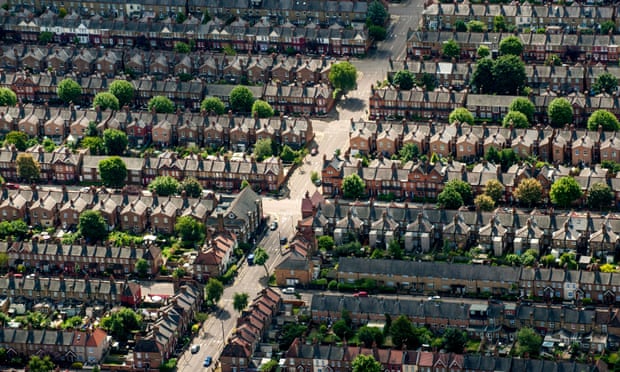The price of an average home in Britain rose £18,000 last year, according to government figures that also revealed sharp regional differences in the housing market.
The 6.7% pace of growth was slower than the 9% rise recorded in 2014, but far exceeded increases in wages or general inflation. The average home in the UK was valued at £288,000 at the end of the year compared with £270,000 in January 2015 and £252,000 in January 2014.
While prices rose fastest in the east of England, in Scotland they ended the year below where they started.
Prices in England were up 7.3%, led by rises of 9.7% in the east of England region and 9.4% in London, but they fell by 0.2% in Scotland. In Wales, prices edged ahead just 1% over the year, while in Northern Ireland they were up 1.5%.
In contrast, the annual pace of rises in the cost of living in January was only 0.3%, the Bank of England said on Tuesday, the highest level for a year. Meanwhile, wages were ahead just 2% in 2015.
The Office for National Statistics said that while house prices in England were now one-fifth higher than their pre-financial crash peak, in Scotland they remained 1.7% below the June 2008 level, while they languished 44.6% below the heights of 2007 in Northern Ireland.
Jan Crosby, head of housing at accountants KPMG, warned that the huge gap between house price rises and wage growth was a “crisis that will only worsen” unless more was done to boost the supply of new homes.
“In 2005, the average price of a home was £186,000 – by 2015 it was £288,000. An increase of more than £100,000, or 55%, in just 10 years is concerning. In 2005, average annual earnings were £18,949 and by 2015 the ONS recorded them as £22,487.
“If we don’t see reform, in another 10 years the gap between house prices and earnings may have become truly impassable.”
One crumb of comfort for hard-pressed first-time buyers is that the ONS recorded a month-on-month fall in house prices between November and December 2015, when they dropped by 0.2%.
Estate agents said a short-lived boom by buy-to-let landlords snapping up homes before planned tax changes was now petering out.
Paul Smith, chief executive of haart estate agents, said prices had been driven up in part by buy-to-let investors. “They sought to complete on their second home purchase in anticipation of the 3% stamp duty surcharge coming into effect in April. As we reach mid-February there is little chance of any investor, especially where the transaction is part of a property chain, being able to complete by April and as a result this market anomaly is tailing away.”
The ONS figures are regarded as the most reliable data on house prices and its 6.7% figure for the calendar year suggests that the commercial indices produced by Halifax and Nationwide were wide of the mark in 2015.
Halifax said house prices grew 9.2% in 2015, while Nationwide put the figure at 4.5%. The Land Registry of England and Wales said the annual inflation rate was 6.4%.
The Council of Mortgage Lenders said it handed out loans worth £46.7bn to first-time buyers in 2015, up slightly on the £45bn lent in 2014. Lending to landlords jumped sharply, rising from £26.9bn (including remortgages) to £37.5bn in 2015, an increase of 39%.
Howard Archer, an analyst with IHS Global Insight, said: “We expect house prices to rise by around 6% over 2016 amid healthy buyer interest, which could well be fuelled by increased expectations that interest rates will not rise this year, and a relative shortage of properties.”


